Robert Dudley, Earl of Leicester is famously known as the favourite of Elizabeth I. His reputation in history is that of an ambitious womaniser and though he hardly had a slew of lovers, what relationships he did have were certainly dramatic This was mostly because they were conducted in the court of a Queen who considered him off limits to anyone save herself. This wasn’t a completely ridiculous notion, seeing as, for much of their lives together, Leicester was openly courting Elizabeth and was considered a legitimate suitor for her hand. So if one were to think of a love triangle surrounding Leicester, the first thought would probably be of one involving Elizabeth and his first wife, Amy Robsart.
Leicester was in almost constant attendance of the Queen upon her accession, to the point that it was rumoured they would be married if Robsart were to die. The rumours went into overdrive when Robsart was actually found dead, in September 1560, aged twenty-eight. Although there was an inquest which concluded Robsart had fallen down the stairs and broken her neck, it was almost publicly accepted that either Leicester, the Queen or possibly both had killed his poor wife, so that they could be married. While Elizabeth’s feelings towards Leicester were not diminished, rumours and speculation abounded so far as to prevent her ever taking him as her husband, if she were so inclined.
Leicester’s attentions were not to be diverted, and he continued to woo her for many years to come. Even while he sought the Queen’s hand, however, he managed to embroil himself in a second love triangle with two ladies at court which he tried desperately to keep from his royal mistress and resulted in him marrying one (if not both) of the women concerned.
The Women
The two women in question were Douglas Sheffield and Lettice Knollys. Both had been maids of honour to Elizabeth in 1559, the year after her accession, and both would leave court the following year after marriage. Douglas married John Sheffield, Baron Sheffield and went to live in his home in Lincolnshire. For Lettice, it was Chartley in Staffordshire with her husband Walter Devereux, Viscount Hereford. Both women would have been away from court when the scandal of Amy Robsart’s death broke, but they could not have failed to have been aware of it.
In 1565 Lettice attended court festivities, heavily pregnant with her third child. Described as one of the most beautiful women in attendance, Leicester’s attention to her did not go unnoticed. Ambassadors remarked on it in their dispatches and the court was abuzz with the gossip that Leicester had been flirting with the pregnant Viscountess, even in the face of the Queen, while Lettice reciprocated, despite the presence of her husband. In the face of their flirtations, Elizabeth flew into a jealous rage, berating Leicester for his disloyalty even though he had recently refused to be engaged to Mary, Queen of Scots (though he had accepted the elevation to the Earldom of Leicester which was given to make him a more attractive candidate). Assuring his royal mistress of his true affections, Leicester and Lettice broke off their dalliance and Lettice returned to Staffordshire, where she would give birth to her first son, ironically named Robert.
Three years later, in 1568, Baron Sheffield died, aged thirty, leaving the twenty-six year old Douglas a widow. She returned to court and took up a minor position within Elizabeth’s household. With youth and good looks in her favour, Douglas was a noted beauty at court and had a number of admirers. She did not encourage any of them, save for one; the Earl of Leicester.
Possible Marriage #1
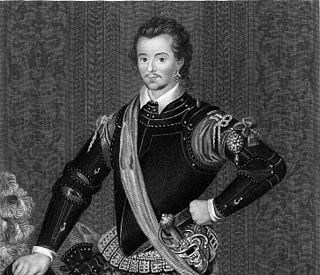
Although there were rumours that Leicester and Douglas had began their affair before her widowhood, these were likely an attempt to cast further aspersions on Leicester’s reputation. In a letter he wrote to Douglas he mentions that their relationship did not begin until after her husband died, and it’s likely they embarked upon an affair within a couple of years of her return to court. Discontent with being his mistress, it seems Douglas attempted to secure a promise of marriage from Leicester which he dismissed entirely. Aware that if he were to marry he would surely lose the Queen’s favour upon which his livelihood depended, he assured Douglas that it would never be so. If marriage was what she sought he suggested she turned her attention to one of her many other admirers and assured her that despite his feelings for her, he would happily assist her in securing a match. The relationship seems to have cooled at this point and they separated.
In 1573 however, Douglas’ younger sister Frances, was noted to start paying attention to Leicester, so much so that Elizabeth noted the sisters’ distinct animosity towards each other and started asking around as to what the problem was. When she discovered that the bone of contention was her favourite, who was at this point pursuing her hand in earnest, she was displeased. While Frances and Leicester seem to have had little to do with each other after the Queen’s discovery, Douglas and Leicester were reconciled. Whether or not they had resumed their affair before this point we do not know, but by summer 1573 Douglas and Leicester were most certainly together. Although their relationship was the subject of much gossip, Leicester still managed to keep it from the Queen and continued to court her. It was the autumn of the same year that Douglas later claimed Leicester had promised her marriage, with the ceremony occurring sometime between November 11th and Christmas. Whether the event occurred or not, nine months later Douglas gave birth to Leicester’s son, named Robert Dudley, whom Leicester would remain close to for his lifetime, but did not acknowledge as his legitimate heir.
Definite Marriage #2
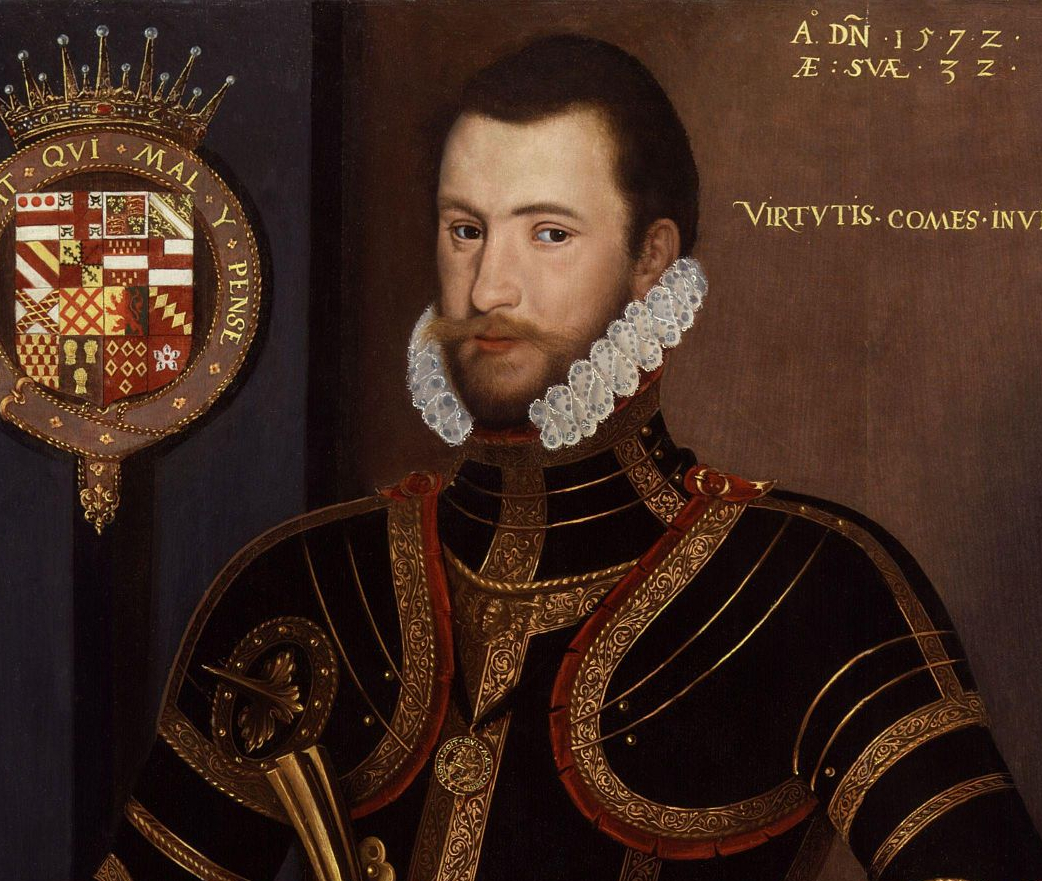
In 1572 Walter Devereux was created the Earl of Essex thus Lettice became a Countess. The following year Essex left for Ireland where he would remain for a further two years. Even though Leicester was still very much entertaining Douglas Sheffield (possible marriage notwithstanding) it’s possible that he embarked on his affair with Lettice during her husband’s absence. Shortly after Essex had departed from England, Leicester sent Lettice a gift of venison from his home at Kenilworth. This was followed by numerous invitations for Lettice to visit Kenilworth for hunting parties (in the company of her sister, Anne. Naturally. No impropriety here). Lettice’s appearances at Kenilworth were frequent enough that she was already present when the Queen visited in the summer of 1565, where Leicester lavished such attention and entertainments on her, some have considered it a last-ditch attempt at winning her hand. If it was, it was unsuccessful, Elizabeth did not marry him, although apparently, she had assured him he was her first choice if she changed her mind (granted this was something she said to a number of her suitors, but given her feelings for Leicester, it might have been genuine). Leicester may not have secured the hand of the queen, but rumours of his affair with Lettice were now becoming widely circulated even in the streets of London, and he was starting to distance himself from Douglas.
If Leicester and Lettice were involved it certainly wasn’t to the extent that rumour suggested. Among the insinuations were those that claimed Lettice had borne three children to him, including Robert Devereux who was being passed as Essex’s heir. Though there may not have been any truth to these, they were circulated widely enough that Essex heard of them as far as his Irish posting. He returned briefly to England at the end of 1575 but did not confront Leicester. If he confronted his wife it was behind closed doors and a short-lived rebuke as he was convinced by the Queen to return to Ireland the following year and died three weeks after his arrival in Dublin lamenting, “the frailties of women.” Though he died, quite naturally, of dysentery, rumours of Leicester and Lettice’s affair had reached a point that Leicester was suspected of poisoning his rival so that he may marry his wife.
Lettice had certainly fulfilled her duty as a wife (in spite of her dalliances with Leicester) and provided her husband with five children. Despite this, the two were considered mismatched and she made no efforts to join her husband during their prolongued periods of separation. As such, she may not have been entirely devastated at the news of his death, especially if she were already involving herself with the Earl of Leicester. However, upon Essex’s death, her children were removed from her care and placed in that of one of her late husband’s relatives. She was also left destitute by her late husband’s debts, forcing her to request assistance from the Queen, a request which was swiftly denied.
While Lettice, like Douglas, had no shortage of admirers, she had fixed her attention on Leicester and seemed determined to marry him. Their affair continued and in 1578 the triangle would come to a head. First, Leicester separated from Douglas. Whether the event was as dramatic as she claimed it was, some thirty years later, or simply a formalising of the end she may have known was coming, their affair/marriage had ended. Shortly after this, in Spring, some suggest Leicester and Lettice were married in a secret ceremony in Kenilworth. If this were true Lettice was in no stronger a position than Douglas, and so in September, a more formal arrangement was made. Leicester took his leave of the Queen ostensibly to prepare his home of Wanstead Hall for her arrival some days later. While he was at it, he also put into wedding plans he and his affianced had probably been planning for some time.
Early in the morning of September 21st, 1578 Leicester and Lettice were married at Wanstead, complete with a number of witnesses with the ceremony performed by the chaplain at the Hall. While it has been suggested that Lettice was pregnant at the time of her marriage as she wore a loose gown (the wedding dress of choice for the pregnant bride), it may have been that was simply an informal mourning dress. The wedding took place shortly after her accepted mourning period would have ended, and if she were pregnant the child was either lost or stillborn for there is no record of it. Two days later the Queen arrived and Leicester was as attentive to her as ever, and though Lettice was obviously present, there was nothing to suggest that they were lovers let alone married. Leicester was no doubt thrilled that the event remained a secret, but it was not to be so for long.
Fallout: Gloriana Edition
Leicester managed to keep the marriage a secret for at most two months before reports of it began circulating at court. The French ambassador referred to the event, claiming he had heard of it from Leicester’s opponent, the Earl of Sussex. For the moment the Queen was still unaware, and Lettice attended court that Christmas. The calm before the storm did not last long and when the storm broke, it was a big one.
How Elizabeth found out is unknown, but it is commonly thought the French envoy Jean de Simier who revealed it to her, probably to advance the suit of his master, the Duke of Anjou. That Leicester had remarried was bad enough, that he had seen fit to do so with her hated cousin fuelled an already explosive fire. The Queen succumbed to fits of screaming about Leicester and threatened to send him to the Tower. Fictional interpretations range from her throwing objects at him, insulting him, hitting him and the servants of hers that she knew, publicly berating him both in and out of his presence, banishing him from court, threatening him with death, the video above and all this before she turns her rage on his wife. Given what we know of Elizabeth’s moods and her attachment to Leicester it really wouldn’t be surprising if some, if not all, of these reactions, were true. Lettice was given a public dressing down, after which the Queen banished her from her presence, something she never really rescinded and Lettice was to remain on the fringes of court life for the rest of Elizabeth’s life. The situation was made worse when it was made known that Leicester might well have already been married to Douglas Sheffield, and the Queen, further incensed, ordered an inquiry and appointed the Duke of Sussex to lead it. Douglas was interrogated by Sussex, but to no avail, for she refused to confirm their marriage. Perhaps because she had refused to implicate Leicester as a bigamist, which would annul his marriage to Lettice, or perhaps because the Queen was angry at their affair at all, Elizabeth also banned Douglas from court. That year Douglas would marry Sir Edward Stafford, who was politically opposed to Leicester and whose mother was the Queen’s mistress of the robes. When he was made the English Ambassador to France, Douglas accompanied him to Paris where she became popular at the French court. The two seemed to have enjoyed a relatively successful marriage, although their relationship was antagonised by her previous relationship with such a prominent figure and so Stafford became even less inclined to like the Earl of Leicester.
Back on English soil, Elizabeth allowed Leicester to continue at court, her relationship with him largely undiminished by his betrayal, on the proviso that they pretended his wife did not exist. In 1581 Lettice gave birth to their only child, Robert Dudley, Lord Denbigh at Leicester House on the Strand. While Elizabeth was happy to marginalise Lettice and pretend the marriage didn’t exist, whenever Lettice moved through London, Elizabeth became very vocal and berated Leicester at court.
Two years later in 1583 Leicester judged that the Queen was sufficiently reconciled to his marriage that he could install Lettice and Denbigh permanently at Leicester House, which would allow him to live with them while attending court. He was incorrect. Elizabeth renewed her rage and openly railed against him and Lettice. The plan was swiftly abandoned. He incurred further wrath when he tried to broker a marriage between Lettice’s daughter, Dorothy, and James VI. Elizabeth was unimpressed, to say the least, threatening to ruin Leicester again. Again, they were reconciled, providing she didn’t have to hear about the “she-wolf,” as she had christened Lettice. For the most part, Leicester managed to live peaceably at court, though Elizabeth was prone to outbursts whenever she was reminded of his wife’s existence.
Tragedy struck in 1584 when Lord Denbigh died suddenly at the house in which his parents had been married. Upon receiving news that his son was ill, Leicester left court without taking leave of the Queen and was with Lettice when their son passed. By now both were in their forties and unlikely to have any more children; a pregnancy after Denbigh’s birth had resulted in a miscarriage or a stillbirth, and there is no mention of Lettice falling pregnant again. Leicester stayed with his wife for some time to console her, where the couple were inundated with condolences from court. Of the Queen’s response, there is no record, and it is unlikely she would have addressed Lettice even in the circumstances, though many of Leicester’s adversaries extended the courtesy. Leicester returned to court, but Lettice was still shunned. Without her infant son or young family to divert her attentions, Lettice instead set herself up as the Countess of Leicester in style and publicly demonstrated her lavish lifestyle. This, of course, did nothing to endear her to Elizabeth who flew into a rage when she discovered that Lettice’s retinue was so grand she had been mistaken for the Queen herself by the general public.
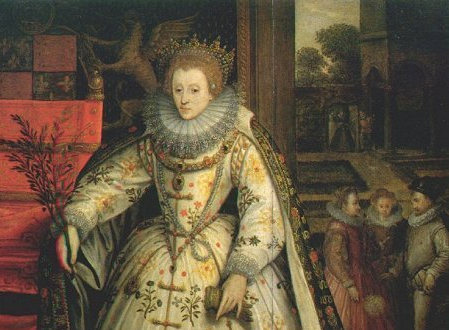
Although Lettice was unwelcome at court, Leicester was a devoted husband. Despite the wrath it incurred, he would leave court to be with her, and he remained a consistent advocate for his stepchildren, especially his stepson Robert Devereux, the second Earl of Essex. The marriage was a happy one for the couple, despite the Queen’s antagonism, though Leicester continued as Elizabeth’s favourite for the rest of his life. When the Spanish Armada threatened English shores in 1588 Leicester was beside the Queen acting as her ‘Lieutenant and Captain-General of the Queen’s Armies and Companies’, a role in which he excelled, despite his increasingly poor health. Elizabeth drew attention to him during her speech to the troops at Tilbury;
“In the meantime my lieutenant-general shall be in my stead, than whom never prince commanded a more noble or worthy subject…”
After their victory, Leicester was constantly in the Queen’s presence, even though his health continued to decline. On the 29th August Leicester wrote a letter to Elizabeth full of feeling and affection, enquiring after her health even though he had no doubt seen her recently and he himself was very unwell. Even while he was writing a messenger arrived with a token from the Queen which he thanked her for. The letter was dispatched and Leicester left to take the waters at Buxton, en route he was joined by his wife. Lettice was with him six days later when he died after being taken ill during the journey.
Upon hearing the news Elizabeth was distraught. She retired behind closed doors and remained there, refusing to eat, refusing her attendants and weeping. She remained there for days until her chief advisor, William Cecil, had the door broken down so that he could console her and return her to her work. Even three months later ambassadors were remarking that she was deeply grieved by Leicester’s death, and his last letter to her was inscribed as such and remained in her possession until her own death fourteen years later.
The Triangle Continues
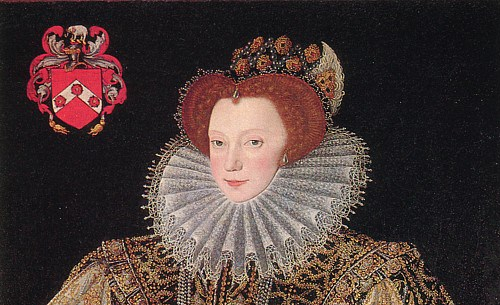
The tensions between Elizabeth, Lettice and Douglas did not end with Leicester’s death. Lettice attended her husband’s funeral but was immediately beset by financial problems and legal proceedings. Leicester had left Lettice well cared for, however, this was offset by his financial obligations to the crown, which he owed £25,000 (he owed a further £25,000 in other debts), and the allowances he had left to Robert Dudley, his son by Douglas. Dudley was much favoured by his father and had been named the heir to Leicester’s estate. However, there was some overlap in the allowances made for both Lettice and Dudley, which prompted a lengthy legal process.
Meanwhile, Lettice also wrote to the Queen, beseeching her to forgive the debt Leicester owed to the crown, fearing she could not meet it. The Queen did not accept, in fact, she ordered that Leicester’s estate be examined in depth down to the minutiae so she could recover all the money owed. No doubt she was immensely gratified when Lettice was forced to sell personal effects, including her jewels, to meet the repayments. Much of the estates Leicester had left her also had to be sold, including Leicester House which she sold to her son, forcing her to retire to the country.
Within seven months of Leicester’s death, Lettice shocked everyone, including her own family, by marrying again. Her choice of groom was termed, “an unhappy choice,” by her son, for instead of an Earl or even a member of the nobility, she married Sir Christopher Blount, a soldier in the employ of her late husband. Leicester had been fond of Blount but probably hadn’t imagined that he would marry his widow, who was seventeen years older than Blount. The marriage caused such scandal that there were rumours Leicester had been poisoned by Lettice or Blount after he discovered the affair. Despite the surprise and that their marriage would be dominated by the legal wrangling over Leicester’s estate, Lettice seems to have been very happy and referred to her new husband as her ‘best friend.’
Still banished from court, engaged in constant legal proceedings and happily settled with Blount, Lettice happily faded into the backdrop of the Elizabethan court, and the Queen heard little of her, even though her son, the Earl of Essex had replaced Leicester as Elizabeth’s favourite. After living quietly for some years news reached Lettice that the Queen may have been ready to receive her back at court. She made her way to Leicester House, now Essex House and awaited the Queen’s pleasure. She was waiting a while. It took months of repeated intercession from Essex before Elizabeth relented and agreed to meet Lettice on neutral ground. The day came and Lettice sent the Queen a jewel in advance and arranged a great feast to welcome her. The Queen did not show up, having decided that morning not to bother. Essex attempted to persuade her but was refused admittance. Some weeks later the Queen relented again and told Essex she would receive his mother at court. Whatever Lettice had expected, the event was thoroughly underwhelming. Lettice was allowed to kiss the Queen’s hand but was denied a second visit and she returned to the countryside without anything to show for her visit.
As Essex fell from the Queen’s favour, Lettice presumed upon her royal mistress and interceded on his behalf. The gesture was not appreciated and Elizabeth issued a stern rebuke. Wisely, Lettice did not attempt to intercede when Essex was sentenced to death for rebelling against the Queen, a sentence her husband shared for his role in the revolt. As with the death of Leicester, Lettice would find little time to grieve. Her financial problems upon the death of her first husband paled in comparison to those she faced now. Her husband and son had died as traitors, so their lands and titles were forfeit (not that Blount had that many to lose in the first place). But Blount had also amassed a considerable debt himself and sold many of Lettice’s lands, goods and effects to compound the debt. This time Lettice did not bother to ask the Queen for assistance. Deep in debt, banished from court and associated with the instigators of rebellion and treason Lettice lived quietly for the remainder of Elizabeth’s reign.
With the accession of James I, Lettice would find life a little easier. In 1603 Elizabeth died and James I restored her grandson by Essex to the Earldom. He also pardoned the remaining £4,000 Lettice owed to the crown, leaving her one less debt to contend with. With her rival dead and her family restored to favour under a new monarch, Lettice would have been forgiven for thinking that her troubles were over. She was wrong.
Judgement

The same year that Lettice’s fortunes changed, a man named Thomas Drury approached Douglas and Leicester’s son, Robert Dudley, and informed him that his parents had been married and he was legitimate. Drury died of plague shortly afterwards and so was unable to offer any further information that might have furthered Dudley’s claim to legitimacy when the case was presented in court the following year. He was thought to have been acting out of self-interest and furthering his own position when he imparted his knowledge to Dudley, however, Drury had been a secretary of Sir Edward Stafford and would have known both him and his wife. Further Drury’s brother was married to Elizabeth Stafford, Edward’s sister, and so it is likely he would at the very least have heard rumours that his master’s wife had been married.
Leicester’s estates had been left to his childless brother Ambrose, and upon his death, Dudley became the heir to both of their lands. This was not inconsiderable as Ambrose was an Earl in his own right, and if Dudley could prove his legitimacy, he would inherit the Earldoms of Leicester and Warwick. If Dudley was proven legitimate, however, Lettice’s marriage to Leicester would have been recognised as bigamous; she would no longer be considered his widow or be entitled to the provisions she received under the terms of his will.
With Dudley instigating proceedings to validate the marriage of Douglas and Leicester, Lettice herself took the matter to the courts, claiming defamation against Dudley and forcing the case to be heard there.
Douglas and her husband had returned to England some years previously, but she did not present herself at court for her son’s case. Instead, she committed her recollections to paper and they were used as evidence. She detailed her courtship with Leicester and their marriage, though she was missing vital information such as who had performed the ceremony, nor could she provide any documentation or reliable witnesses. Further, she claimed that she had only ever denied the marriage in order to protect herself and her son against Leicester’s wrath after he made threats to ruin them. Lettice, on the other hand, was supported by numerous witnesses who could attest to Leicester’s consistent referral to Dudley as his, ‘base son,’ and aided by Leicester’s brother in law Robert who considered himself the heir to the two Earldoms. Although Douglas did not take the stand, her husband did, and he testified that his wife had only admitted to such a marriage under pressure from her son and referred to the earlier enquiry under Elizabeth where she had denied it.
The court ruled in Lettice’s favour, and Dudley would remain illegitimate, though he went on to have a successful career abroad. The court determined the matter would not be revisited in England and with the exception of a Tuscan enquiry in 1621 (which failed to rule in Dudley’s favour again) Douglas and Lettice were left in peace and did not bother each other again. Douglas died in 1608, three years after Stafford, and was buried in Effingham, the traditional seat of the Howard family. Lettice did not marry again and devoted herself to her family, living with her daughters and grandchildren. She lived to the impressive age of 91, dying on Christmas day in 1634 almost fifty years after Leicester. She was buried in the Beauchamp chapel, near Lord Denbigh and beside Leicester who she described in her will as, “the best and most dearest of husbands.”
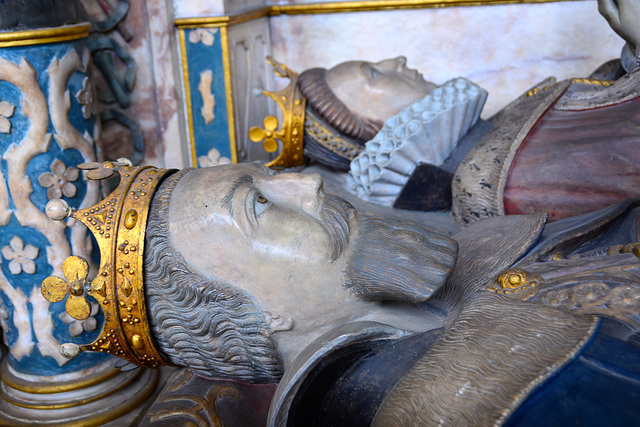
If you’d like to join me for more fun and games in picking apart history, and other behind the scene tangents, you can support me via my Patreon.
















